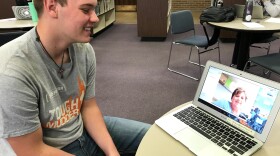Colorado has the fourth worst teacher pay gap in the country. A recent report by the Economic Policy Institute found Colorado teachers make 35.1 percent less that other workers living in similar parts of the state with similar education.
The paper tracks teacher pay since 1979, when they made about 5.5 percent less than comparable workers nationally. By 2017 that gap had grown to 18.7 percent.
"The declining relative pay of teachers compared to their opportunity costs means that less people want to go into the profession," said Sylvia Allegretto, economist and chair of the Center on Wage and Employment Dynamics at UC Berkeley, who co-authored the report. "That certainly has something to do with the teacher shortages that exist all across the country."
To offset the teacher pay penalty, school districts often provide better benefits, making them a larger share of the overall compensation package for teachers than for other professionals. In 2017, nonwage benefits made up a greater share of total compensation for teachers (28.6 percent) than for other professionals (21.9 percent).
As a result, teachers are enjoying a "benefit advantage" that has grown since 1994, from 2.1 percent to 7.6 percent - but that doesn't necessarily equalize the gap.
"The better benefits help mitigate the less pay but not to a great degree," said Allegretto.
When accounting for the benefits advantage, teachers are still behind other similar professions. The "teacher compensation penalty" hit a record-high in 2017, at 11.1 percent in 2017.
Teacher pay in Colorado will be addressed on the November ballot. Amendment 73 will raise taxes for individuals making $150,000 a year and corporations to increase school funding. If the amendment passes, it could raise $1.6 billion for public schools. The money would be split among all the state's school districts to use at their discretion.






